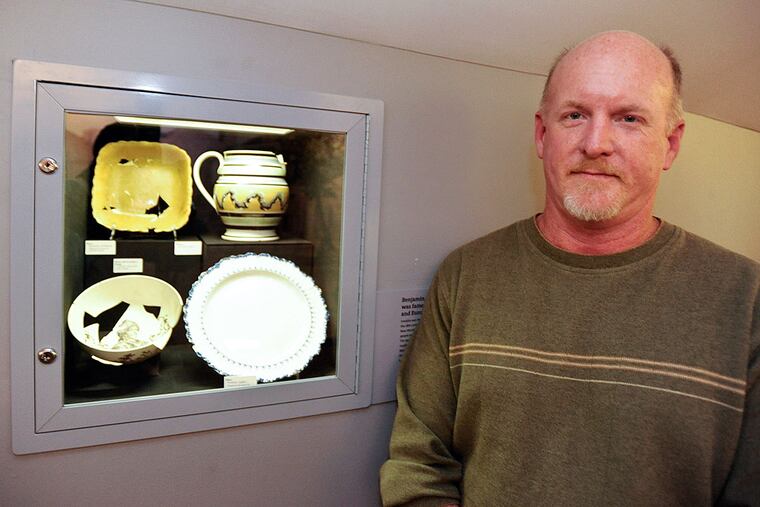Newfound obituary revives an 18th-century free-black Philadelphian
In 2003, the National Constitution Center and Independence National Historical Park undertook the archaeological excavation of an obscure homesite just east of the center, then under construction.

In 2003, the National Constitution Center and Independence National Historical Park undertook the archaeological excavation of an obscure homesite just east of the center, then under construction.
It was the spot where, in the late 18th century, James Oronoko Dexter rented a modest brick house at 134 N. Fifth St., and where, with the house long demolished, a bus depot for the center was planned.
The excavation, undertaken at the urging of Mother Bethel A.M.E. Church and the African Episcopal Church of St. Thomas, produced a wealth of artifacts. But Dexter, a prominent member of the nascent free-black community of that time, remained elusive. Like the vast majority of Americans, he simply vanished into the past.
Now, Douglas Mooney, an archaeologist involved with numerous excavations on Independence Mall, has found an obituary for Dexter that establishes his date of death, and raises numerous questions about who he was. .
According to an Aug. 14, 1799, issue of the Philadelphia Gazette and Universal Daily Advertiser, Dexter died Aug. 8 of that year at the age of 70.
For reasons that remain obscure, he is identified in the obituary as "Noka Kinsey." The obituary offers no hint about where "Kinsey" came from, though "Noka" clearly alludes to Dexter's enslaved name, Oronoko. But there is no question that the subject is Dexter.
The obituary notes that he was "a free African" involved as a coachman for 30 years with the family of the Quaker abolitionist and preacher John Pemberton.
Dexter, it goes on, "evinced such fidelity, temperance, and honesty, joined to an obliging temper, as gained him the confidence and respect of all who knew him: by his industry and care, he maintained with decency a large family; which in his death loses its principal support. - His funeral was attended to the burial ground, of the African church by his brother who is near eighty years of age, and by a very large number of people of his own colour."
Mooney was ecstatic at the discovery.
"I was about jumping out of my skin the day I found it," he said. After a decade of looking, "I was resigned to the fact that there was nothing."
The notice in the Gazette was not the obituary's only appearance in print. Mooney discovered that it was reprinted up and down the East Coast - perhaps because of John Pemberton's travels as a preacher, perhaps due to Dexter's own reputation, perhaps due to simple copying.
Dexter was a founding member of the city's first black church, St. Thomas, in 1794; he was possibly a founder of the Free African Society, the nation's first all-black self-help society. He organized and signed petitions expressing black concerns to the city fathers; he may have promoted and signed what would be the earliest black petition to Congress, seeking abolition and a sanctuary in West Africa, in 1792.
Much of this has been painstakingly documented - with numerous gaps, questions and qualifications - by archaeologists, historians, and archival researchers.
Dexter's North Fifth Street homesite is of immense importance to American history and identity. It was there in the early 1790s that the city's most prominent black leaders, including Richard Allen, Absalom Jones, and William Gray, met to plan construction of the first black churches - St. Thomas and Mother Bethel - and where they discussed the state of Africans in the New World.
That would make 134 N. Fifth one of the significant wellsprings of American culture and political life flowing down to this day.
"We know the road to Selma and beyond is to come," archaeologist Peter Glumac once commented regarding the lives and activities of Dexter, his neighbors and associates. "This is where it began. . . . Here, black individuals first stood up and formed their own unions and institutions."
The obituary mentions a previously unknown elder brother, and the reference to a large family suggests previously unknown marital unions and children.
"He led a remarkable life," Mooney said. "It's very frustrating. He's standing right in front of you, but you can't quite reach him."
ssalisbury@phillynews.com
215-854-5594
@SPSalisbury